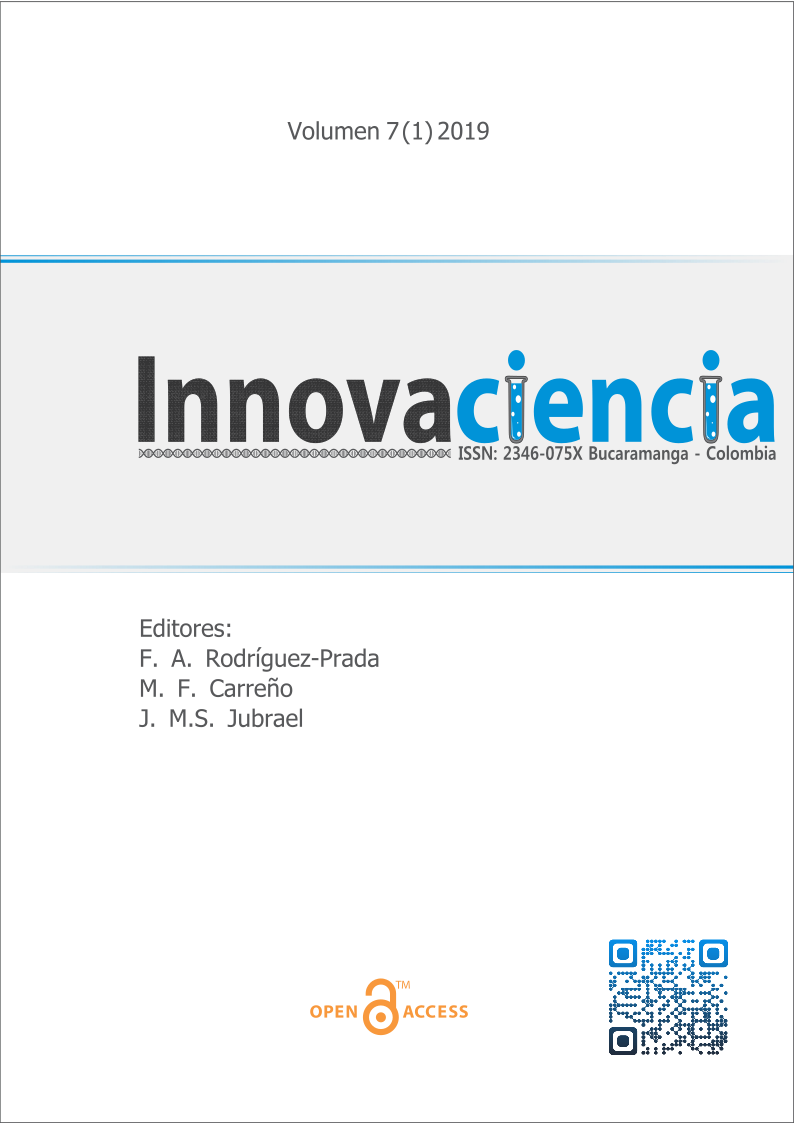Synthesis, identification and thermal study of some new inorganic polymers based on bis-dithiocarbamate ligands with silicone, tellurium and some transition metals
DOI:
https://doi.org/10.15649/2346075X.507Keywords:
bis-Dithiocarbamate ligands; Epoxy resins; Si; Te; Inorganic polymerAbstract
Introduction: In recent years, there has been considerable interest in dithiocarbamate complexes because of its diverse biological roles, very few reports have been made on polymeric bis- dithiocarbamate compounds with carbon chain of n-propyl or hexamethelene with transition metals in addition of the absence of any report of organosilicone or tellurium halides with such compounds Our interest in this report based on the preparation of new series of polymers with an expected activity as a fungi side compounds followed by the using of prepared amino compound as a hardners for epoxy paints Materials and Methods: A new polymers of the general structures –(MS2CNH(CH2)6NHCS2M-)n where [M= Cu, Cd, Mn and Zn] and –(M(R)2S2CNH(CH2)nNHCS2MR2-)m where [M= Si,
R=CH 3 , n= 2 ,3 and 6 ; M=Te , R= Br , n= 2 ,3 and 6 ; M=Co, Ni R=Cl ; n= 6] have been prepared by reaction of MX2 where M= Ni ,Co, Cd , Mn
or Zn , X= Cl ; M=Cu , X= SO4 , and dimethyl dichloro silane, tellurium tetrabromide with the corresponding sodium salts of bis-dithiocarbamate
ligands. Results and Discussion: Dimethyldichloro silane is a very sensitive material to O-H group, in addition to that, TeBr4 decomposed rapidly
in water so, a series solvents may be useful with such sensitive chemicals to water , in the other hand, dithiocarbamate ligands which is usually prepared in aqueous and alcoholic solution , must be prepared and isolated carefully to apply the other steps of synthesis using a chloroform solution as a solvent. It seems for the first view for dithiocarbamato ligands it may act as a bi dentate ligands using two sulphur donating atoms that is clearly appeared in common complexes such as diethyl dithiocarbamato or pipyridyl, morpholino dithiocarbamato with representation metal elements, even in such type of elements a sulfur bridges may formed. In this study, it showed clearly that Zinc and Cadimium polymers are diamagnetic polymers that is mean that these polymers are with oxidation state equal to (II) and a tetrahedral configuration Conclusions: The study showed that the new silicone polymers act as a stable polymers compared with others. All new polymers are of a high stability with large values of char contain with commercial epoxy. Among silicone polymers, the polymer
with carbon chain equal to 3 is more stable than that with 2 carbon atoms while the silicone polymer with 6 carbon atoms is the less stable one, may thermal treatment caused decomposition combined.
References
- Ning T, Xinmin G, Hailiane Z and Minyu T , Pollyhedron , 1990; 9 : 859-862. https://doi.org/10.1016/S0277-5387(00)81352-2
- Baroncini E. A, Yadav S. K., Palmese G. R, Stanzione J. F. REVIEW J. APPL. POLYM. SCI. 2016; 44103: 1 - 19
- Ahmed MAK., McWinnie W R and Granger P., Polyhedron 1986;5:859-862. https://doi.org/10.1016/S0277-5387(00)84448-4
- Huang Z, Lakshmikantham M V , Lyon M, Cava M P, J. Org. Chem., 2000;65: 3413. https://doi.org/10.1021/jo0001030
- Edward R.T, Zukerman J, Coor. Chem. Rev. 2010; 46: 254.
- Al-Rubaie A Z and Al-Luaibi M Y, Int.J. Sci. 2005; 14: 71-78.
- Müller F, Ackermann P, Margot P "Fungicides, Agricultural, Individual Fungicides". Weinheim: Wiley-VCH. doi:10.1002/14356007, 2012; 2. https://doi.org/10.1002/14356007
- Shreve O D, Anal. Chem., 1952; 24 (11): 1692-1699. https://doi.org/10.1021/ac60071a003
- Rosu D, Mustata F. . Cascaval CN, Thermochimica Acta ,2001;370(1-2):105-110. https://doi.org/10.1016/S0040-6031(00)00787-5

Downloads
Published
How to Cite
Issue
Section
Altmetrics
Downloads
License
All articles published in this scientific journal are protected by copyright. The authors retain copyright and grant the journal the right of first publication, with the work simultaneously licensed under a Creative Commons Attribution-NonCommercial 4.0 International License (CC BY-NC 4.0), which permits sharing the work with authorship recognition and without commercial purposes.
Readers may copy and distribute the material from this journal issue for non-commercial purposes in any medium, provided the original work is cited and credit is given to the authors and the journal.
Any commercial use of the material from this journal is strictly prohibited without written permission from the copyright holder.
For more information on the copyright of the journal and open access policies, please visit our website.



















